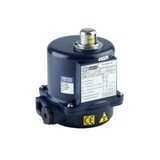Discover how to balance cost, risk, ESG and compliance in sourcing decisions. A practical guide for Australian procurement and supply chain leaders.
Key takeaways
-
Cost includes unit price plus freight, duties, and inventory holding; Australian freight surcharges surged over 200% in 2021.
-
Risk covers supplier instability and geopolitical shifts, affecting 23% of Australian firms in 2023; local sourcing often costs 15–20% more and faces capacity limits.
-
Resilience improves by diversifying with global, local, and friend-shoring partners, reducing supply disruption impacts by up to 30%.
-
Compliance has driven 85% of Australian companies to increase supply chain transparency following updates to the Modern Slavery Act.
-
Strategy relies on decision frameworks balancing cost, risk, resilience, sustainability, and compliance, used by 85% of leading Australian procurement teams.
- Sourcing strategy : Globally source high-volume, cost-driven items like electronics and fasteners, but prioritise local suppliers for regulated, time-sensitive or custom components.
Introduction
In today’s globalised economy, Australian businesses face a pivotal sourcing decision: tap into cost-efficient overseas suppliers or support local manufacturers with shorter lead times and greater visibility. Both approaches come with trade-offs in cost, risk and resilience. Recent events, from shipping-container shortages to geopolitical tensions in the Indo-Pacific, have highlighted weaknesses in long, single-source supply chains. At the same time, domestic capacity struggles to keep pace with demand for critical items, as seen during the COVID-19 PPE shortages. In this article, you’ll explore the key considerations for global versus local sourcing in the Australian market and gain practical guidance to shape a robust, cost-effective and compliant procurement strategy.
Cost considerations
When you evaluate sourcing costs, start by calculating total landed cost, not just the unit price:
- Unit price: the supplier’s quote per item.
- Freight and logistics: ocean freight surcharges surged by over 200% during 2021 and remain above pre-pandemic levels, adding up to 15–20% to product cost in early 2025.
- Duties and tariffs: while Australia’s Free Trade Agreements (FTAs) cut or eliminate tariffs with key partners like China, Japan and South Korea, you still face import duties on non-FTA markets.
- Inventory carrying costs: longer lead times mean higher safety-stock requirements. Holding an extra month’s stock adds approximately 2% to your working-capital costs annually.
- Customs clearance and compliance: time delays can translate to demurrage fees of up to AU$100 per container per day during peak periods.
In 2023–24, Australia’s merchandise imports rose 5.0% to AU$604.6 billion, while exports fell 4.2% to AU$659.4 billion, underscoring the country’s reliance on overseas suppliers for key inputs. By contrast, domestic manufacturing industries reported a combined operating-profit decline of AU$60 billion (–8.6%), reflecting higher input prices and labour costs.
Practical advice
- Analyse landed-cost models for each supplier option, updating them quarterly to reflect freight, currency and tariff changes.
- Negotiate long-term contracts with freight forwarders to secure volume discounts and rate stability.
- Explore FTAs and tariff exemptions, your local trade adviser or Austrade can help identify duty-free pathways.
Risk factors
Global sourcing heightens exposure to a range of risks:
- Geopolitical instability: 63% of Australian CEOs ranked geopolitical risk as their top concern in late 2024, up from 51% a year earlier.
- Supplier solvency and reliability: factory closures in Southeast Asia during COVID-related lockdowns left many Australian buyers scrambling.
- Quality and compliance lapses: overseas suppliers may lack robust quality-management systems or ethical controls, leading to recalls or brand damage.
- Forced-labour and modern slavery: thousands of imports from companies linked to Uyghur forced labour were identified in early 2025, reigniting calls for stronger import bans and supply-chain due-diligence measures.
Local sourcing also carries risk:
- Capacity constraints: Australian manufacturers may lack the scale to meet sudden spikes in demand or niche product specifications.
- Higher base costs: labour and energy costs in Australia are among the highest in the OECD, putting upward pressure on prices.
- Single-source dependency: relying solely on one domestic supplier exposes you to local disruptions like industrial action or bushfires.
Mitigation strategies
- Dual or multi-sourcing: blend global and local suppliers to reduce single-point-failure risks.
- Supplier audits: implement a regular audit cadence, covering financial health, ESG practices and compliance with standards like ISO 9001.
- Contractual safeguards: include force-majeure, quality and sustainability clauses in procurement agreements.
Resilience and agility
Supply-chain resilience is about your ability to prevent, absorb, adapt and transform when disruptions strike. Australia’s Office of Supply Chain Resilience advocates this framework for critical industries.
- Visibility: real-time tracking of shipments and tier-2/3 suppliers through digital control towers improves speed of response.
- Flexibility: nearshoring or “friend-shoring” to trusted allies (e.g. ASEAN partners with FTAs) shortens lead times and reduces geopolitical exposure.
- Redundancy: holding emergency stock locally for critical components can bridge gaps during international delays.
- Collaboration: sharing demand forecasts with suppliers supports joint risk assessments and contingency planning.
The Achilles Supply Chain Resilience Index Q3 2023 showed a modest risk-score improvement from 58.8 to 59.1, but global conditions remain challenging, particularly in commodity-price volatility and geopolitical tensions.
Practical tips
- Invest in visibility platforms to monitor orders from order-placement through to delivery.
- Run scenario analyses annually, simulating port closures, natural disasters or major cyber-attacks.
- Develop a playbook with pre-defined steps for supplier substitution, inventory drawdown and customer communication during crises.
Compliance and regulatory landscape
Australian businesses must navigate a complex regulatory environment:
- Modern Slavery Act 2018 (Cth): the 2024 review lowered the reporting threshold from AU$100 million to AU$50 million consolidated revenue, significantly expanding the number of reportable entities.
- Tariff reforms: the 2023 abolition of nearly 500 “nuisance tariffs” is estimated to save businesses over AU$30 million annually.
- Free Trade Agreements: FTAs with ASEAN, UK, EU (in negotiation) and CPTPP members impact duties and local-content requirements.
- Environmental and safety standards: products like cosmetics, food packaging and electrical equipment must comply with TGA, FSANZ or electrical safety regulators, adding complexity to sourcing decisions.
Compliance checklist
- Map your end-to-end supply chain, including tier-2 and tier-3 suppliers.
- Maintain up-to-date modern-slavery statements and evidence of due-diligence processes.
- Regularly review FTAs and tariff schedules for emerging opportunities to reduce duties.
- Ensure product certification aligns with Australian standards (e.g. RCM mark for electronics).
Sustainability and ESG considerations
Beyond cost and risk, modern buyers must also factor in environmental, social and governance (ESG) impacts:
- Carbon footprint: longer shipping routes increase Scope 3 emissions; local sourcing can reduce transport-related emissions by up to 70% for bulky goods.
- Ethical labour: strong local labour laws mitigate forced-labour risks; overseas suppliers may lack transparent labour-practice oversight.
- Circular economy: local partners often offer easier product take-back and recycling programmes.
Action points
- Quantify transport emissions for each supplier option and include carbon cost in your total-cost model.
- Require suppliers to report on key ESG metrics, such as greenhouse-gas emissions and labour-practice audits.
- Partner with local recyclers or remanufacturers to close supply-chain loops.
Emerging trends
Several trends are reshaping sourcing strategies in 2025:
- Digital supply-chain twins: advanced modelling of end-to-end networks supports real-time “what-if” analyses.
- AI-driven risk intelligence: predictive analytics flag supplier-failure patterns and geopolitical flashpoints earlier.
- Automation and robotics: 63% of global firms plan heavy investment in robotics to boost agility, while 37% already use automation to replace warehouse labour.
- Friend-shoring: balancing cost benefits of overseas supply with reliability by working with like-minded, allied partners.
Industry-specific sourcing insights
While the global vs. local sourcing debate applies broadly, each industry in Australia faces its own nuances and supply chain realities. Below are a few tailored insights for key sectors:
Manufacturing:
- Australian manufacturers, particularly in automotive, industrial equipment, and whitegoods, often rely on overseas inputs like electronics, steel, and polymers. Many import from Taiwan, South Korea, or China to control costs. However, disruptions in these regions can have cascading effects on local production timelines.
- Tip: To improve lead time reliability, some local manufacturers are now dual-sourcing with Australian steel mills or engaging New Zealand suppliers to minimise shipping lags.
Healthcare
- Healthcare importers face strict oversight under the Therapeutic Goods Administration (TGA). Items like PPE, diagnostic kits, and medical devices must meet ARTG registration, labelling, and performance standards. Delays in customs clearance or failed compliance checks can jeopardise patient safety and cause critical shortages.
- Example: During COVID-19, some importers faced shipment rejections due to missing TGA-compliant documentation, despite meeting CE or FDA standards overseas.
Construction
- The building sector saw massive supply delays between 2020 and 2023 due to reliance on overseas precast concrete panels and aluminium cladding. These long-lead imports created delays of up to 14 weeks.
- Alternative: Local modular construction and fabrication firms, such as those in regional Victoria and Queensland, offer faster turnaround, even if unit prices are slightly higher.
Agribusiness
- Importing fertilisers, pesticides or animal feed requires strict compliance with Department of Agriculture, Fisheries and Forestry (DAFF) biosecurity laws. Shipments can be held or destroyed if documentation is lacking or if pests are detected. Seasonal sensitivity further complicates timing.
- Mitigation: Partner with freight forwarders experienced in agricultural imports and consider splitting orders across ports to reduce risk exposure.
Red flags to watch for when importing
Even experienced procurement teams can get caught out when dealing with international suppliers. Here are some of the most common red flags that signal risk, and how to proactively avoid costly mistakes:
- Lack of proper documentation
- Be cautious of suppliers who can’t produce verifiable certifications, such as ISO 9001 (quality management) or ethical sourcing policies. This raises questions about product consistency and legal compliance.
- “Too good to be true” pricing
- Ultra-low quotes may signal counterfeit products, corner-cutting on materials, or even fraudulent operators. Always compare benchmark pricing and ask for samples.
- Poor communication and slow response times
- Delays in replying to emails or providing updated shipping info often suggest operational disorganisation, or worse, lack of reliability under pressure.
- Confusion over Incoterms (CIF vs. FOB)
- Many importers overlook the fine print of international shipping. CIF (Cost, Insurance, Freight) can hide extra destination charges, whereas FOB (Free on Board) gives you more control but requires more logistics handling. Always clarify which terms apply, and get it in writing.
- Incomplete or incorrect customs paperwork
- Missing import permits, fumigation certificates or HS code mismatches can cause delays of 7–14 days at Australian ports, incurring storage, demurrage or fines.
Making the choice: Key criteria to guide your sourcing strategy
When evaluating global vs local sourcing, align your decision with the following:
Cost tolerance
- What’s your true landed cost?
- Can you absorb or hedge currency swings?
Quality and IP control
- Do you need in-person inspection or proprietary design security?
Speed and agility
- How often do you restock?
- Can you wait 3–6 months for replenishment?
Risk exposure
- How reliant are you on one geography or supplier?
- What is your plan B?
Ethical and brand alignment
- Are you prepared to stand behind your sourcing story to investors, auditors, and consumers?
Common products globally vs. locally sourced
Choosing where to source a product isn’t just about price — it’s also about availability, lead time, regulatory standards, and the strategic value of supply resilience. Here’s a practical breakdown of which product categories are typically sourced globally, which are more viable domestically, and how Australian businesses can decide what to source from where.
Commonly globally sourced products
These are typically sourced from overseas due to cost efficiency, lack of local manufacturing, or global production dominance.
- Electronic components & semiconductors
- Most come from China, Taiwan, South Korea or the US. Local fabrication is minimal.
- Example: PCB assemblies for industrial controllers often sourced from Shenzhen or Seoul.
- Heavy machinery & parts
- Earthmoving equipment, turbines, and industrial gearboxes are often imported from Germany, Japan, or the US.
- Risk note: Global freight lead times for parts often exceed 8–12 weeks.
- Plastics, polymers & resins
- Raw materials for packaging, piping or automotive parts are often imported from Southeast Asia or the Middle East.
- Tip: Prices can be volatile with oil prices; local stockpiling strategies may be needed.
- Steel fasteners and generic hardware
- Bulk-produced in China, India, or Vietnam. Hard to justify local production due to volume and cost scale.
- Consumer electronics & whitegoods
- Most brands are assembled offshore (e.g. Malaysia, Thailand) even if designed in Australia.
- Generic PPE and disposable supplies
- Surgical masks, gloves, and gowns often come from China, Malaysia, or Vietnam.
- During COVID-19, reliance on global PPE caused major shortages for Australian health networks.
Commonly locally sourced products
These are more commonly sourced within Australia due to regulatory compliance, local standards, or logistical urgency.
- Structural steel and fabricated components
- Australian producers meet local building codes and short turnaround times.
- Use case: Local sourcing helped keep infrastructure projects on schedule during COVID-related port congestion.=
- Custom electrical switchboards and panels
- Local engineering firms build to Australian electrical and safety standards (e.g. AS/NZS 61439).
- Advantage: Easier to coordinate customisation and site-specific approvals.
- Food & beverage ingredients
- Especially fresh produce, dairy, and meats where cold-chain logistics or country-of-origin labelling are critical
- Specialised industrial coatings & chemicals
- Certain formulations must meet strict Australian environmental or health standards (e.g. for potable water contact).
- Note: Often faster to resolve tech-support issues with domestic chemical suppliers.
- Custom metalwork, CNC machining, and short-run components
- Shorter lead times and ability to iterate quickly make local shops ideal for prototyping or urgent jobs.
- Modular buildings or prefab site facilities
- Local firms in Victoria and Queensland now provide fully finished site cabins and modular builds, bypassing shipping delays.
Decision-making tips for mixed sourcing
- Global for commodity items: e.g. screws, plastics, or generic PPE — leverage price advantages, but build buffer stock.
- Local for regulated, customised, or time-sensitive goods: where compliance, variation or project deadlines are critical.
Use dual sourcing: secure high-volume supply globally but have a local back-up to reduce single-point failure.
Conclusion
Deciding between global and local sourcing is not a zero-sum game. By adopting a hybrid strategy, leveraging the cost advantages of global suppliers while reinforcing resilience and compliance with local partners, you can build a supply chain that is both efficient and robust. Remember to update your cost models regularly, stress-test your network, stay ahead of regulatory changes and integrate ESG metrics into your procurement scorecards. With these practices, you’ll be better placed to navigate today’s challenges and seize tomorrow’s opportunities.









